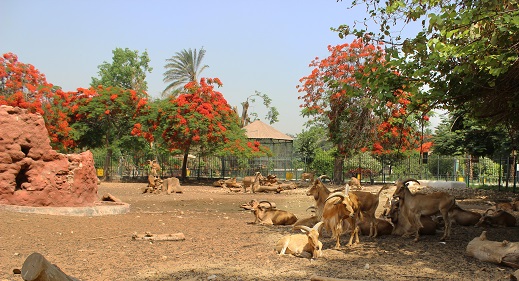|
|
|
|
|
|
|
|
|
|
Barbary sheep كبش أروي
|

|
Barbary sheep in Enclosure at Giza Zoo
Class: Mammalia
Order: Artiodactyla
Family: Bovidae
Species: Ammotragus lervia |
Distribution:
Barbary sheep originated in hills of Sahara and has inhabited all the major mountains of North Africa.
Habitat:
They live in the Desert Mountains from sea level up to the edge of the snows.
Barbary sheep are also well adapted to a dry climate. They are able to survive long periods of time without fresh water intake by using metabolic water. |  |
Description:
Barbary Sheep stand 80 to 100 cm tall at the shoulder and weigh 40 to 140 kg. They are a sandy-brown color, darkening with age, with a slightly lighter underbelly and a darker line on the back. Upperparts and outer legs are uniform reddish-brown or grayish-brown. There is some shaggy hair on the throat (extending down to the chest in males) and a sparse "mane".
Their horns have a triangular cross section. The horns curve outwards, backwards then inwards, and reach up to 50 cm. The horns are smooth, but wrinkled at the base. Scientists say that the horns can grow to be about six inches long.
Diet:
Barbary sheep are herbivorous, feeding on a variety of vegetation such as grass, forbs, and shrubs. Seasonal variation plays a role in determining their diet. In the winter, grass makes up the majority of food intake, while shrubs are the more common food the rest of the year.
Behavior:
They obtain all their moisture from food, but if water is available they drink and wallow in it. Barbary Sheep are crepuscular, active in the early morning and late afternoon, resting in the heat of the day. They are very agile and can jump over 2 m from a stand-still.
Barbary Sheep are usually solitary, and freeze in the presence of danger.
|
|
|
|
|
|
|
|
|
|